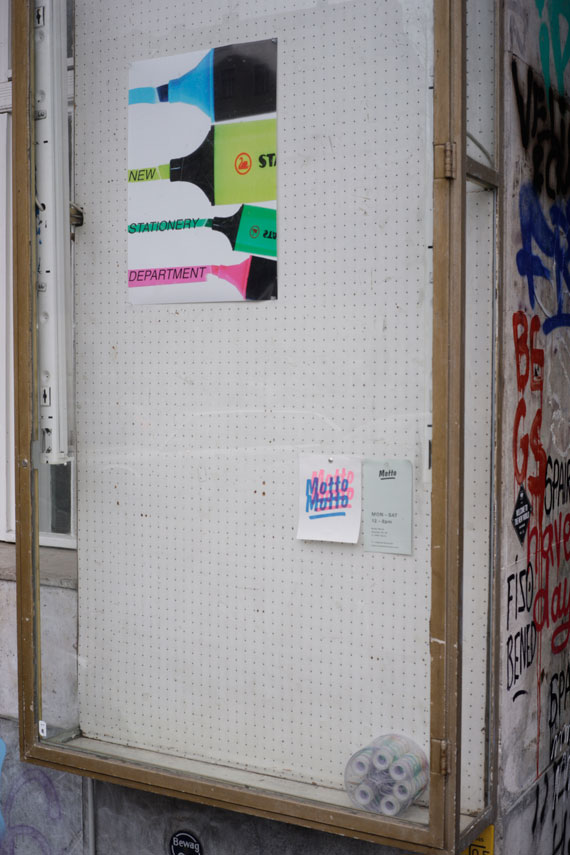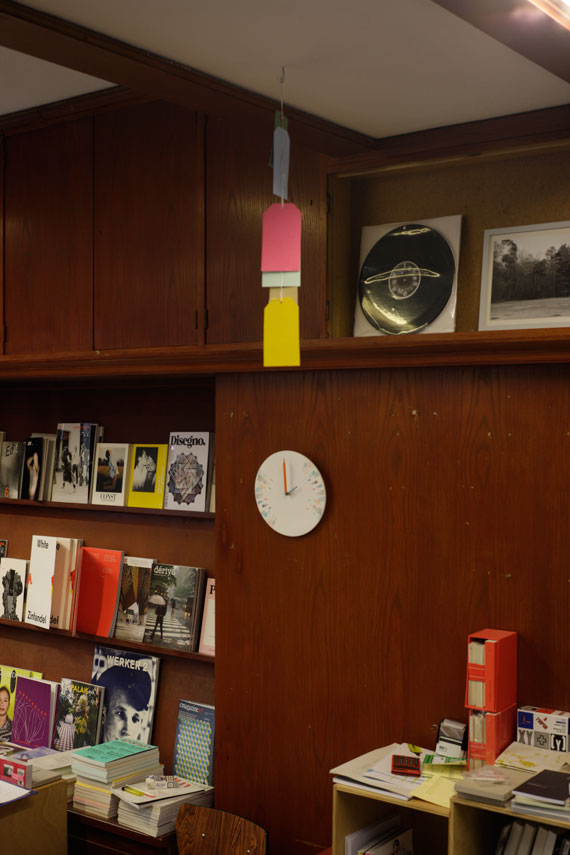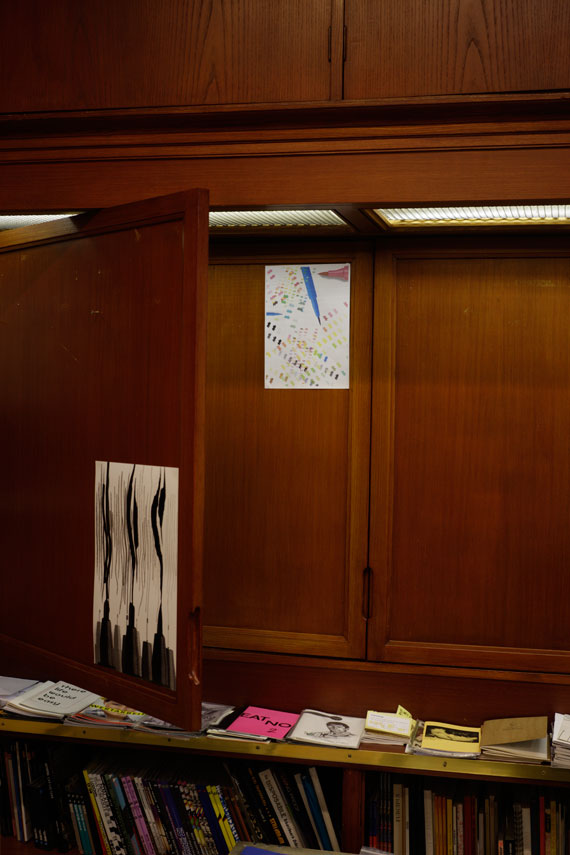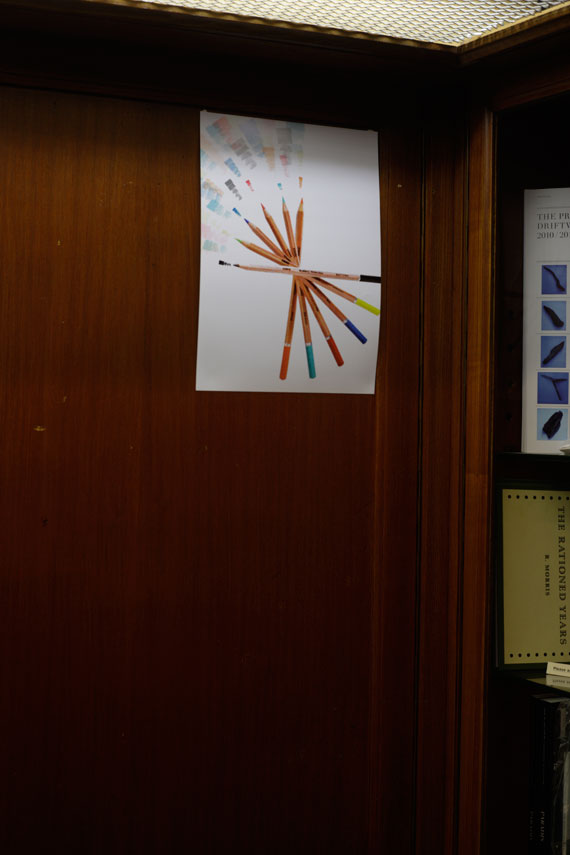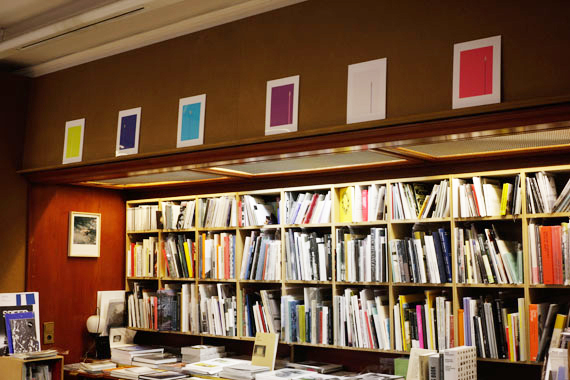| SARA MACKILLOP |
| Selected Works |
| Recent Exhibitions |
New Stationery Department |
| Artists Books |
| CV |
Installation view, New Stationery Department, Poster and tape 2013
Envelope Poster One
Pen string
Envelope Poster Two
Pen fence, record sleeves
Clock, tags
Stationery Catalogue Drawings 2013
Stationery Catalogue drawing
Pencils in their own colour
Installation View
New Stationery Department, by Gregorio Magnani text to accompany exhibition
Sara MacKillop’s New Stationery Department opens on Good Friday at Motto. Stationery and the afterlife of library books are long-standing interests of hers.
Though not endowed with nostalgic appeal, stationery is a niche industry increasingly under threat. Its cheap wares are intrinsically linked to the physicality of paper and the process of analogue written communication. Both a thing and a sign, stationery leads a double life. In the private realm, companies such as the Martha Stuart Home Office ® with Avery ™ promise an enhanced life experience through prettier pencils, fully partaking in the post-Fordist nightmare of a productive leisure. In unabashedly Fordist secretarial circles, better stationery is always the first step towards a strictly regulated work place and unrivalled productivity.Sara MacKillop’s New Stationery Department takes the form of a book and a show. The book is similar in form to many stationary catalogues. Cheapness, though it is not real, is amply referenced. The ink appears to lurk through the paper, so that unrelated items are superimposed on a same page. But such is the self-reflexivity of artistic research. An eraser erases itself out of a page, coloured pencils are placed on so perfectly matched backgrounds that, except for the little bit of wood before the point, they disappear.
In the New Stationery Department pens, post-its, etc. perform their traditional role, but do so in an ecstatic manner. Liberated from its disciplining role, stationary is given over to the enjoyment of its own obsolescence, and to the pleasure of getting things done while the mind wonders elsewhere. Qualities specific to art such as shape, colour, texture, rhythm, etc., explode the ideology of competence which supposedly throws us into panic when confronted with the less ideal use of ever more sophisticated tools. In the New Stationery Department, at the threshold between the public and the private sphere, a little impractical revolution is underway.
